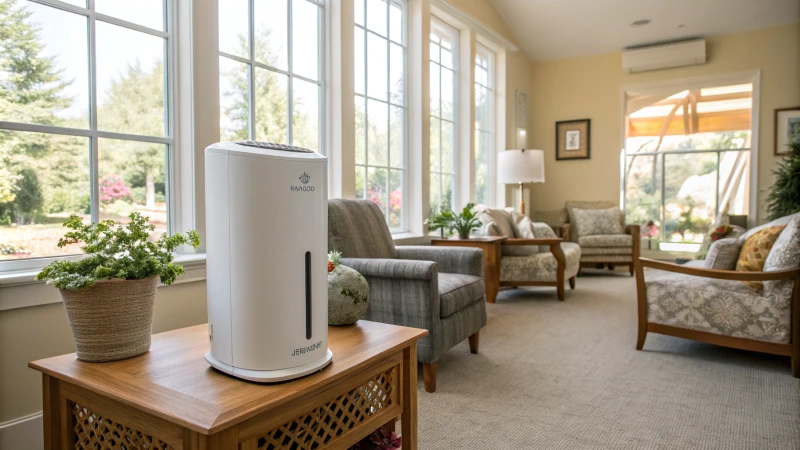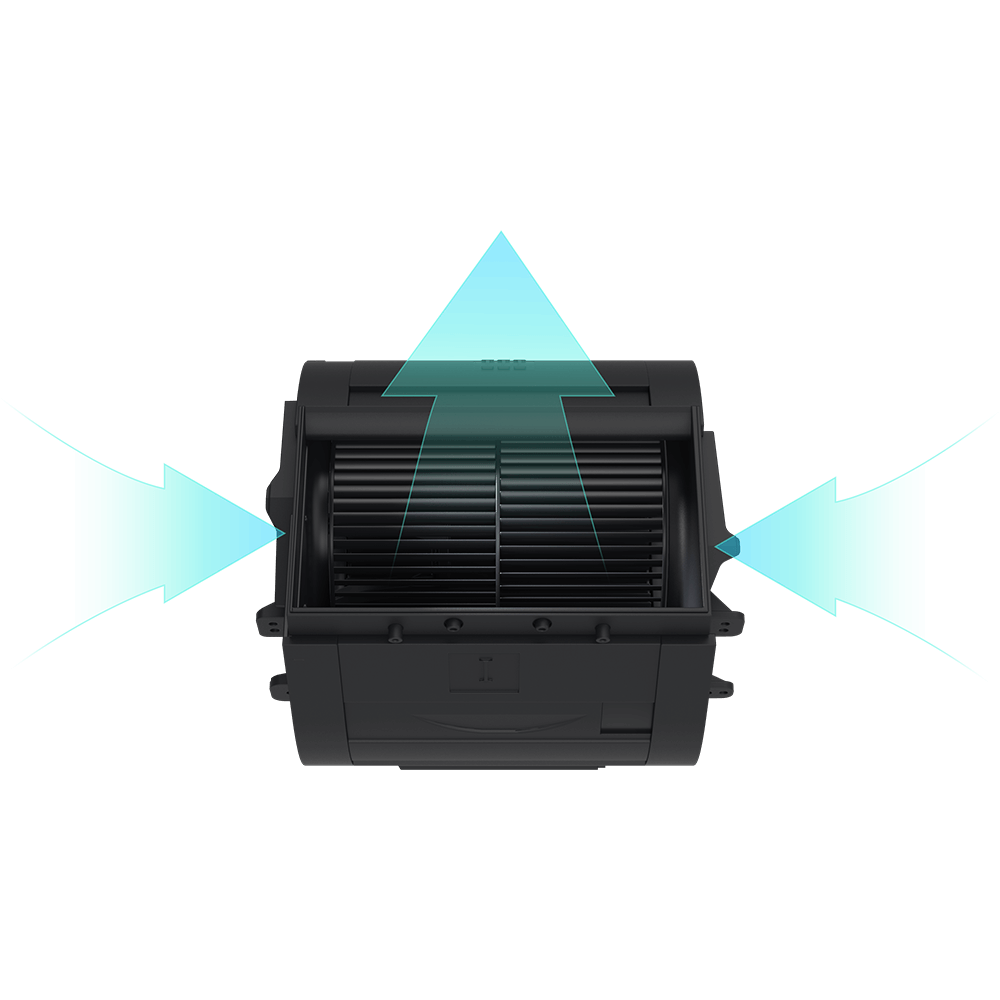
I remember the time when I realized how crucial clean air is for our loved ones in nursing homes.
HisoAir air purification systems enhance indoor air quality in nursing homes by employing H13 True HEPA filtration and advanced multi-stage technology. This effectively traps airborne particles, viruses, and contaminants, creating a safer environment for elderly residents and staff alike.
It all started with my grandmother's stay at an assisted living facility. The air felt heavy, and I often worried about her health in such an environment. Discovering how HisoAir systems can transform these spaces was a game-changer. With their advanced technology, they not only capture harmful particles but also ensure peace of mind for families like ours. Let’s delve into how these systems make a difference.
HisoAir uses H13 True HEPA filtration.True
HisoAir systems use H13 True HEPA filters to capture particles.
HisoAir is ineffective against viruses.False
HisoAir systems are designed to capture viruses effectively.
What makes HisoAir's technology unique?
Imagine walking into a room and instantly feeling the fresh air embrace you. HisoAir makes this a reality with its smart technology.
HisoAir's technology is a game-changer with its multi-stage filtration system, real-time air quality sensors, and whisper-quiet operation, making it both effective and comfortable for everyday use.

Advanced Filtration System
You know that feeling when you realize your dusty old filter might not be cutting it? That's where HisoAir comes in with its advanced multi-stage filtration. I remember the first time I learned about H13 True HEPA filtration1—it was like finding out there’s a superhero in your air purifier. This system captures 99.95% of tiny particles, as minuscule as 0.1 microns, and it's like having a microscopic shield against viruses, bacteria, and allergens.
| Feature | Description |
|---|---|
| HEPA Filtration | Captures particles and pathogens effectively |
| Activated Carbon | Eliminates odors and VOCs |
With this combination, you can breathe easy knowing your air is not just clean but fresh.
Smart Technology Integration
Have you ever wished your air purifier could just read the room and adjust itself? HisoAir's smart sensors do exactly that. These sensors continuously monitor indoor air quality (IAQ) and tweak the filtration levels without you having to lift a finger. It’s like having a little air quality wizard in your corner, offering real-time insights and automatic adjustments that keep your space as pure as possible.
- Real-Time Monitoring: Provides insights into air quality fluctuations.
- Automatic Adjustments: Adapts to environmental changes swiftly.
Facilities can access real-time data through dashboards, enhancing transparency and data-driven decision-making2.
Ultra-Quiet Operation
And let’s talk about noise. I used to think all air purifiers were loud until I experienced HisoAir’s Decibel Cancellation™ Technology. It's perfect for environments where peace is crucial, like nursing homes or offices where concentration is key.

Benefits in Specific Environments
Nursing Homes
- Localized Purification: Units can be placed in common areas and resident rooms, offering tailored air cleaning without overhauling existing HVAC systems.
Offices
- Improved Productivity: Enhanced IAQ leads to better concentration and fewer sick days among employees.
The beauty of HisoAir is how it adapts to different environments, contributing to healthier living and working spaces. Explore more about localized purification strategies3.
HisoAir's H13 HEPA filter captures 99.95% of particles.True
The H13 True HEPA filtration in HisoAir removes 99.95% of particles.
HisoAir units lack real-time air quality monitoring.False
HisoAir units have sensors for continuous real-time air quality monitoring.
How Do Air Purifiers Support Infection Control in Nursing Homes?
Imagine walking into a nursing home and breathing in crisp, clean air, knowing it's safeguarding the well-being of your loved ones.
Air purifiers bolster infection control in nursing homes by filtering out airborne pathogens, minimizing virus spread, and enhancing air quality, thereby shielding vulnerable elderly residents from respiratory infections.

Importance of Indoor Air Quality in Nursing Homes
Every time I visit my grandmother at her nursing home, I'm acutely aware of the environment she lives in. The air quality isn't just about comfort; it's about safety. Elderly residents often have compromised immune systems, making them more susceptible to airborne illnesses like COVID-194. Poor IAQ can worsen respiratory conditions and help pathogens thrive. By integrating air purifiers, we can greatly reduce these health risks.
How Air Purifiers Work
Think of air purifiers as vigilant guardians for the air we breathe. They employ HEPA filters to snatch up particles as minuscule as 0.3 microns—yes, that includes viruses, bacteria, and allergens. Some advanced models even team up HEPA with activated carbon to tackle odors and volatile organic compounds (VOCs).
| Features | Benefits |
|---|---|
| HEPA Filtration | Captures 99.97% of airborne particles |
| Carbon Layer | Reduces odors and VOCs |
| Quiet Operation | Ensures a peaceful environment |
Placement and Efficiency
Placing these purifiers strategically in shared spaces, resident rooms, and hallways ensures they cover all bases. Unlike standard HVAC systems, these units are standalone, offering focused purification and better air circulation.
Real-Time Monitoring
Today’s air purifiers are quite the smart machines—they come with sensors that adjust filtration based on detected contaminants. This doesn't just ensure the best possible IAQ but also provides transparency for nursing home management and families.
Case Study: Air Purification Success
In a compelling case with HisoAir5, significant reductions in airborne viruses were observed in a nursing home. Facilities reported healthier residents and fewer respiratory infections.

Investing in high-quality air purification systems is an investment in the health and safety of our cherished elders and their caregivers, ensuring that these facilities meet health guidelines with flying colors.
HEPA filters capture 99.97% of airborne particles.True
HEPA filters are designed to capture 99.97% of particles as small as 0.3 microns.
Air purifiers replace traditional HVAC systems in nursing homes.False
Air purifiers complement HVAC systems by providing localized air purification, not replacing them.

Can Improved Air Quality Enhance Overall Resident Health?
Breathing clean air is more than just a luxury—it's a lifeline for good health. As cities strive to clear their skies, it's worth asking how these efforts truly benefit us.
Improved air quality can significantly enhance health by reducing exposure to harmful pollutants, thus decreasing respiratory and cardiovascular issues. Cleaner air directly supports overall well-being, particularly by mitigating conditions like asthma.

The Impact of Air Quality on Health
I remember when I first moved to the city; the air felt thick, almost like it was weighing me down. It wasn't until I started experiencing mild asthma symptoms that I realized how much air quality could affect my health. This experience is not unique—many people living in urban areas face similar challenges due to poor air quality, which often contains pollutants like PM2.5, nitrogen dioxide, and volatile organic compounds (VOCs). These pollutants can lead to serious respiratory problems6 such as asthma, bronchitis, and even lung cancer.
The World Health Organization (WHO) has conducted studies showing that improved air quality can significantly reduce chronic respiratory diseases. It's comforting to know that when we breathe cleaner air, we're also lowering our risk of cardiovascular issues. It’s not just about avoiding illness; it’s about enhancing our overall quality of life7.
Indoor Air Quality and Its Effects
Growing up, I never thought much about the air inside my home. It wasn't until I visited my grandmother in a nursing home, where ventilation was poor, that I understood the importance of indoor air quality (IAQ). Many buildings, especially older ones, have inadequate ventilation leading to an accumulation of indoor pollutants. Advanced air purification systems can make a world of difference by drastically improving IAQ and reducing exposure to allergens and pathogens.
Example Table: Common Indoor Pollutants and Their Sources
| Pollutant | Source |
|---|---|
| Dust Mites | Carpets, Bedding |
| Mold Spores | Damp Walls, Bathrooms |
| VOCs | Paints, Cleaning Products |
| Tobacco Smoke | Cigarettes |
Technologies Enhancing Air Quality
I've always been fascinated by technology, especially when it brings tangible benefits like cleaner air. Innovative technologies such as HEPA filters and activated carbon filters play a critical role in enhancing air quality. These systems capture harmful particles ensuring cleaner air circulation within closed spaces.
Smart air purifiers with real-time monitoring capabilities adjust dynamically to current pollution levels supporting health and aligning with global sustainability goals8 by promoting energy-efficient solutions.
Broader Societal Benefits
Cleaner air benefits everyone—not just individuals. Healthier residents mean reduced healthcare costs and increased productivity. Schools with better air quality experience fewer student absences due to respiratory illnesses.
Cities like Copenhagen and Tokyo have successfully reduced pollution through stringent environmental regulations setting an example for others to follow.
In conclusion, enhancing air quality is a multifaceted endeavor requiring cooperation across various sectors. It involves everything from individual initiatives at home to broader regulatory frameworks. Together we can create environments where we all breathe a little easier.
Improved air quality reduces respiratory disease incidence.True
WHO studies show that cleaner air leads to fewer chronic respiratory diseases.
HEPA filters are ineffective in enhancing indoor air quality.False
HEPA filters capture harmful particles, improving indoor air quality significantly.
What are the cost benefits of using HisoAir in elder care facilities?
Imagine walking into a room and feeling the air so fresh, you could practically taste it.
Using HisoAir in elder care facilities offers cost benefits by reducing healthcare expenses, improving staff productivity, and lowering energy consumption. Its advanced filtration ensures healthier environments, leading to fewer illness-related costs and enhanced resident well-being.

Enhanced Health Outcomes and Cost Savings
I remember visiting my grandmother at her care facility, and every sniffle or cough among the residents made me anxious. The air felt heavy, like it was saturated with worries about health risks. Integrating HisoAir systems can make a world of difference by reducing healthcare costs9. These systems improve indoor air quality, which can significantly minimize the spread of airborne illnesses. Fewer illnesses mean fewer hospital visits, which is a relief for everyone involved. Cleaner air can reduce respiratory problems among residents, translating into fewer medications and doctor visits.
Increased Staff Productivity
Think about those days when the air feels thick, making it hard to concentrate or even breathe easily. Better air quality with HisoAir benefits staff by enhancing their working environment. With reduced exposure to pollutants and allergens, they experience fewer sick days. I’ve seen firsthand how this improvement boosts productivity and reduces staff turnover costs10. Happy staff provide better care, leading to improved outcomes for everyone involved.
Energy Efficiency and Operational Cost Reduction
HisoAir systems are like that friend who’s a master at organizing—everything runs smoothly without extra effort. They're designed with energy efficiency in mind and integrate seamlessly with existing infrastructures without the need for extensive retrofits. This means avoiding high installation costs. Facilities save on energy expenses as HisoAir units optimize air circulation efficiently.
| Feature | Benefit |
|---|---|
| H13 True HEPA Filtration | Reduces medical costs by filtering out pathogens |
| Smart Sensors | Lowers energy bills by optimizing air purification |
| Quiet Operation | Enhances staff focus and productivity |
Scalability and Long-Term Investment Benefits
The modular design of HisoAir allows facilities to scale their systems according to need. I once worked with a team that had to adjust plans on the fly due to unforeseen changes, and having adaptable solutions like this is invaluable. This adaptability makes it a long-term investment, providing consistent air quality improvements over time. Facilities can gradually enhance their indoor environments11 without overwhelming initial costs.
Implementing HisoAir not only protects residents but also aligns with financial goals by ensuring healthy environments that reduce overall operational expenditures. These systems support compliance with health regulations, offering peace of mind to stakeholders and families alike. For more detailed examples of cost savings and practical applications, further research can be explored through relevant links.
HisoAir reduces hospital visits by improving air quality.True
Improved air quality minimizes airborne illnesses, reducing hospital visits.
HisoAir systems require extensive retrofits in facilities.False
HisoAir integrates seamlessly without the need for extensive retrofits.
Conclusion
HisoAir air purification systems enhance indoor air quality in nursing homes by using advanced HEPA filtration, reducing airborne pathogens, and creating healthier environments for residents and staff.
-
Learn about the H13 True HEPA filtration system's ability to capture extremely small particles effectively. ↩
-
Understand how smart sensors enhance air quality by providing real-time data and automatic adjustments. ↩
-
Discover how localized purification can improve air quality in specific areas within nursing homes. ↩
-
Understanding how COVID-19 impacts nursing homes highlights the need for air purifiers to mitigate risks. ↩
-
Explore a real-world case study showcasing the effectiveness of HisoAir purifiers in reducing infections. ↩
-
Explore how pollutants contribute to respiratory conditions like asthma, providing insights into prevention and management. ↩
-
Understand the relationship between cleaner air and reduced cardiovascular risks. ↩
-
Discover energy-efficient technologies that align with global sustainability goals. ↩
-
Explores detailed studies showing how better air quality reduces healthcare costs, which is crucial for decision-makers. ↩
-
Provides insights into how improved air quality boosts staff productivity, reducing turnover and associated costs. ↩
-
Discusses how scalable air purification systems like HisoAir benefit elder care facilities in the long run. ↩







